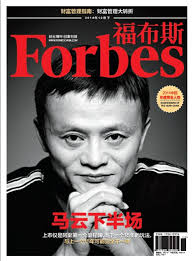Blog 5 – Vision of Leadership
Who are leaders? One thousand people have one thousand opinions. Some people say Beyoncé and Lady Gaga are leaders; some say Cameron and Obama are leaders; some regard Jack Ma and Elon Musk as Leaders. I think they are all correct, because a good leader explains, a superior leader demonstrates and a great leader inspires others (Rlochner 2013).
“Leadership is the process of facilitating other to understand and consent with what needs to be done and how to do it (Yukl 2010:26).”
My vision of leadership is to be an emotional intelligence leader that can motivate others and build good relationship with them. I think good leaders should know what they want to be, focus attention on what matters most, then inspire themselves and others to take action to make constructive change towards their target. Leaders have compelling personal visions and visions of their teams, which can motivate both leaders and followers to achieve their purpose.
Emotional Intelligence Model
 Emotional Intelligence (EI) is considered as a key component of effective leadership, which is the capability of understanding and managing your emotions, and people around you. According to Goleman (2004) EI for leadership is consisted of five attributes:
Emotional Intelligence (EI) is considered as a key component of effective leadership, which is the capability of understanding and managing your emotions, and people around you. According to Goleman (2004) EI for leadership is consisted of five attributes:
- Self-awareness: the ability to recognize one’s own emotions, strengths, weaknesses, values and drivers and understanding their impact on others.
- Self-regulation: controlling or redirecting our disruptive emotions and adapting to change circumstances in order to keep the team moving in a positive direction.
- Motivation: Self-motivated leaders work consistently toward their goals, and they have extremely high standards for the quality of their work.
- Empathy: the ability to communicate effectively and properly manage relationships in order to move a team of people in a desired direction.
- Social skills: effective communication and good at managing change and resolving conflicts diplomatically. Misunderstandings and lack of communication are usually the basis of problems between most people.
Jack Ma
From a normal English teacher to the richest man in China, the business experience of Jack Ma is legendary. The CEO of Alibaba has inspired my understanding the meaning of effective leadership. Not only his characteristics but also unique leadership style has inspired me. I have learnt a lot from him how to become a successful people or leader, for instance, keeping your dream alive, getting inspired and inspiring others, having passion. He even taught me that how to face failure. Don’t complain and look for opportunities to success. He is also an ethical leader, he always say:”employees are the most important for a company, then consumers are second most important and shareholders are the last important, because when your team exist, your consumers will exist”.
Intelligence is an important factor in leadership and He owns almost all the elements of EI. He is self-regulated and good at recognized the strength and weakness of markets and people. He has been the model of many entrepreneurs and his employees admire him for his motivation and enthusiasm. Under his leadership, Alibaba has been the world’s largest ecommerce firm.
Feedback and Personal Reflection
I think people are not born to be a leader but learning how to be leaders. Through the learning of Leadership in Changing World, I realized that people are the core strategic resource for organisations; I also understand the relationship among ethics, culture, diversity and change, as well as the most effective approach of management. Team work and virtual team are important for improving the leadership skills. I think working with diverse teams is really hard because they have different culture, background and characteristics. They have different attitudes and opinions to the same problem, to make an agreement, find the most suitable solution and motivate other to implement the team work.
I think I got the following leadership skills from this module, such as decision making skills for supporting of organizational vision, motivating and inspiring others are the important skills for leadership. Leaders have the ability of connecting with the people they need, telling them what to do and inspiring them to do it.
After the study of MBA, I found my strength and weakness which are essential for personal development in leadership. My strengths are team working skills, flexibility, self-motivation and determination. My weaknesses are language skill, critical thinking and self-confidence. Learning how to utilize personal strengths and overcome your weaknesses is important for being a good leader.
Reference
- Business Insider (2014) 5 types of emotional intelligence all great leaders has mastered [online] available from
- Goleman, D (2004) Emotional Intelligence & Working with Emotional Intelligence. London: Bloomsbury Publishing PLC
- Rlochner (2013) a mediocre leader tells [online] available from < http://ricklochner.com/a-mediocre-leader-tells/> [16 June 2015]









![ADNY66T8JYC[{K[OJ]I%]LH](https://liuxin2702.wordpress.com/wp-content/uploads/2015/05/adny66t8jyckojilh.png?w=672&h=159)






